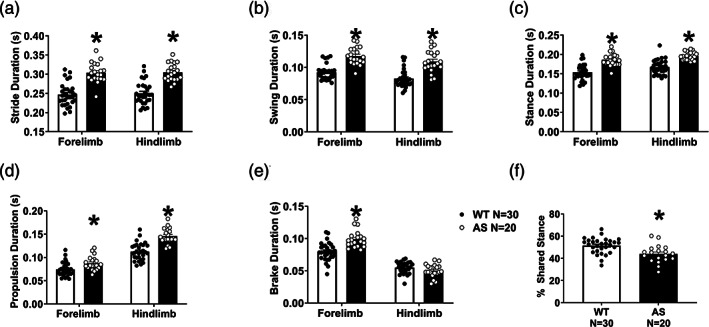FIGURE 3.

AS mice exhibit deficits in temporal metrics of gait compared to WT controls. (a) Stride duration was elevated in both fore and hindlimbs of adult AS mice, compared to WT controls, requiring more time to make a single step. (b) AS mice showed an increased duration spent in the swing phase, when the paw has no contact with the ground, compared to WT. (c) Converse to swing, it was expected that the AS mice spent less time in the stance phase of the stride. (d) Within the stance phase, propulsion is the lift‐off of the paw from the ground into swing, propelling the animal forward. The AS mice show increased time spent in this phase. (e) At the opposite end of the stance is braking, when the paw exits the swing and meets the ground, which was also shorter in AS, but only in the forelimbs. This is likely related to the specialized role of steering forelimbs are primarily used for in quadrupeds. (f) Curiously, AS mice showed reduced time spent in % shared stance, also known as double support. Bars represent mean ± SEM * indicates p <0.05 (a–e) between genotype post hoc comparison, (f) Student's t‐test
